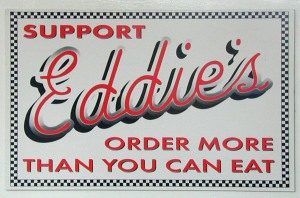Dance! (about my dance photography)
January 31, 2010
This text is from the preface to my book of dance photography, Dance!, which is available directly from me, or from Amazon.com. The book includes full page reproductions of all the images in galleries Dance 1 and Dance 2 on my photography web site, www.arthurfinkphoto.com.
I document the work and energy that goes into dance — not just the final performance. Being in the studio as dances are created, or even as dancers prepare themselves, feels like being in a delivery room as children are being born. Amidst pain or anguish, tempered with rhythm and support, and bolstered with faith, new life emerges. It’s physical, sometimes sensual, often spiritual. Too often this process is ignored, as image makers look only at the final result — the dance. Read the rest of this entry »
Some recent dance images
January 2, 2010
These five images are available on a special sale — $150 each, with 20% off if you buy two or more. They were archivally framed for Portland’s “Black Frame Art Sale”, in 12″ x 12″ frames. You can pick them up in my office, or have any number of them shipped for $16. Payment can be via check, or paypal.
Dancing with horses – The Equus Projects
November 29, 2009
These pictures were taken of the Equus Projects — a company of dancers who work mostly in relationship with horses on the ground. This is not about fancy riding, but about dancing between species. I had the privilege here to work with Joanna Mendl Shaw and some of their dancers as they first got to really meet these wonderful horses.
(Of course all of these images are for sale as archival framed prints.)
Continue to see more images in this series. Read the rest of this entry »
Back from Holland — with more than a few pictures!
November 19, 2009
Birthing is a dance
November 3, 2009

On becoming a dance photographer (part 1)
October 28, 2009
I had just moved to Portland, Maine, intending to leave my consulting career and open a commercial photography studio. In those days we didn’t have personal computers with desktop publishing software, and so I hired a designer to produce my business card, letterhead, etc.
Her suggestion: “Your work is so graphic, and so visually strong . . . take pictures of something like dancers, and use these on each printed piece”. And so I did — set up my strobe lights and a nine foot wide roll of white background paper, invited dancers from a local modern company, and my own dance began!
Making good art can be painstakingly slow, but my first attempt at dance photography was easy, exhilarating, and spiritually fulfilling. She struck a pose, and I snapped. I moved a bit, adjusted, and clicked again. She moved. Click. And on we went. I found myself drawn into a visual dialog. Later I would discover that it was actually a dance — although I’ll hasten to say that I’m not in any way a dancer. Read the rest of this entry »
Look before you photograph . . . look carefully
October 26, 2009
This is my 90 second photography lesson! Look before you photograph.
In my dance photography class, I note that most people walk into the dance studio, or into the theatre for a rehearsal, pick up their camera, and start shooting right away. I guess they are looking for the highest leap, or the kmost perfect arabeque, or some other triumph. That doesn’t work.
Start by looking . . . carefully. Find something visually exciting, something that tells your story, something that you want to share with us. Find something too important to miss.
And remember . . . your job is not just to be in the presence of this wonderful dance, or this beautiful landscape, or whatever. It’s to craft pictures that draw on your vision. You are translating a three dimensional moving world into flat still images. They will only be exciting if you are alive, creating passionately, seeing with all your strength.
If I were to ask you what you’re photographing, I hope you just say something like “that beautiful dancer”. Let me know that you’re photographing a visual rhythm, or a magnificant sweep of energy, or something else very special that you just saw.
Remember . . . before you photograph, look! Really look.
A few images from the 5×5 Dance Festival – Friday night
October 24, 2009
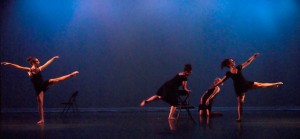
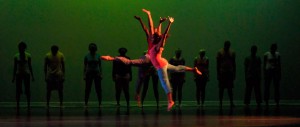
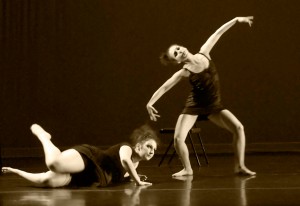
Dance!
October 23, 2009

copyright 2009 by Arthur Fink
I’m at St. Joseph’s College for their 5×5 dance festivals — to hang a show, photograph rehearsals, and teach a class on dance photography.
I document the work and energy that goes into dance — not just the final performance. Being in the studio as dances are created, or as dancers prepare themselves, feels like being in a delivery room as children are being born. Amidst pain or anguish, tempered with rhythm and support, and bolstered with faith, new life emerges. It’s physical, sometimes sensual, often spiritual. Too often this process is ignored, as image makers look only at the final result — the dance.
The class might have been entitled, “Seeing Dance like a Photographer”, as it will be much more about the process of seeing than about the technique of actually taking the picture. We’ll watch short live performances, and share our visions of the still images that tell the story of each dance — its energy, emotion, artistry, and visual pattern, and that might express our feeling on seeing this piece.
Talk to me about bringing this program to other venues. I believe it’s important for dancers to work at seeing themselves as others might see them.
Read Adam Gopnik’s “Postscript” on photographer Irving Penn
October 18, 2009
I wish I could copy the entire text here, but more properly I urge you to read the Adam Goipnik’s short “postscript”article about Penn at the New Yorker web site. Here’s the concluding paragraph:

photograph by Irving Penn
Penn’s subject—as in “Woman with Long Black Neck” … —is not performance but inner poise, and the dignity of appearances became his central theme. His work is a memorial of a specially privileged era, where the duties of a fashion photographer and the ambitions of an artist could coexist in one serenely realized surface, an age that in retrospect seems to have been one of fine silver, coolly applied
Also on the web site is a slide show of some of Penn’s best work.
This issue of the New Yorker also has a compelling article by Malcolm Gladwell about the dangers of football. Gladwell doesn’t call for us to abolish the “sport”, but it’s hard to imagine any other conclusion from the data he presents.
Images from the Bates Dance Festival 2008
October 17, 2009
I’ve set out to photograpaph the energy of dance, the culture of dance, the community of dancers. That might not mean catching the most perfect arabesque, or the highestt leap. It’s about photographing from within, from the heart, and giving expression to what I saw and felt.
Living at Bates for the whole festival, I was sharing, eating, attending classes and rehearsals with the dancers the whole time Here are just a few of my images from that experience:
All of these dance images, and others on my photography web site, are for sale. Please inquire. Also, I have a book, Dance! that is for sale on Amazon, or directly from me.

© 2009 Arthur Fink
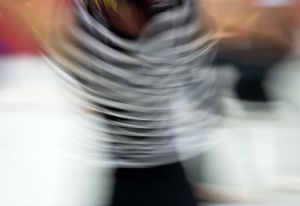
© 2009 Arthur Fink

© 2009 Arthur Fink

© 2009 Arthur Fink









